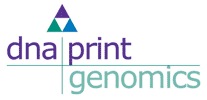 The newest entrant in the field of personal genomics has officially gone live. Pathway Genomics, located in California, uses SNP testing to examine information about Health conditions, Ancestry, Carrier Status, Personal Traits, and Drug Response. The company collects DNA via a spit kit, and has its own lab on-site:
The newest entrant in the field of personal genomics has officially gone live. Pathway Genomics, located in California, uses SNP testing to examine information about Health conditions, Ancestry, Carrier Status, Personal Traits, and Drug Response. The company collects DNA via a spit kit, and has its own lab on-site:
We decided early on that the surest way to completely secure your information would be to build our own CLIA-certified laboratory. And that’s just what we did. Once we receive your saliva sample in our lab, your DNA never leaves the building. As a matter of fact, we place it in our proprietary DNA Lockbox for safekeeping. No other DNA testing firm offers this level of security. Others send your DNA elsewhere for testing, even to non-secure overseas locations!

 In October 2007, I wrote about the launch of
In October 2007, I wrote about the launch of 
 In February, I received a
In February, I received a